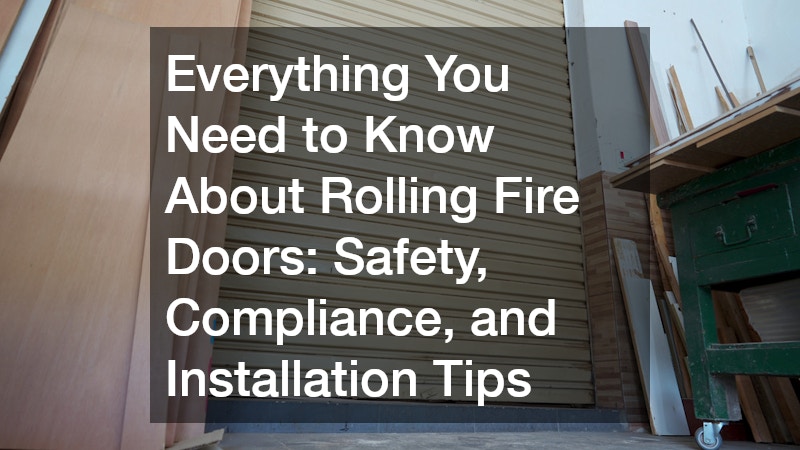
In this comprehensive guide, we cover the essential aspects of rolling fire doors, including their safety features, regulatory compliance, and installation tips. Whether you’re looking to install new doors or maintain existing ones, this article provides insights and information to ensure safety and compliance. Rolling fire doors are crucial components in fire safety systems, designed to prevent the spread of fire and smoke between compartments in a building.
What Are Rolling Fire Doors and How Do They Work?
Rolling fire doors are designed to close automatically in the event of a fire, providing a barrier that slows the spread of flames and smoke. Typically constructed from materials like steel or aluminum, these doors are highly durable and heat resistant. Their compact design makes them ideal for locations where traditional hinged doors are impractical.
These doors consist of several components, including a curtain, barrel assembly, guides, and an automatic closing device such as a fuse link. The curtain rolls around a barrel at the top of the doorway, guided by side tracks to ensure smooth and controlled operation. In the event of a fire, the automatic closing device activates, unrolling the curtain to create a sturdy fire barrier.
Rolling fire doors can be customized to fit various sizes and specifications, catering to diverse building environments. The adaptability of these doors allows for seamless integration into different architectural styles and functional requirements. As safety solutions, they fulfill both aesthetic and protective roles in modern building design.
Rolling fire doors operate with a sophisticated mechanism designed to detect fire and respond swiftly. Typically, a fire detection system or a thermally activated device triggers the release of the door mechanism. Upon activation, the door curtain unspools from the barrel, guided by side channels to close off the opening efficiently.
What Are the Safety Regulations and Compliance Standards for Rolling Fire Doors?
Fire safety codes related to rolling fire doors are established to ensure these doors function correctly during emergencies. These codes specify criteria such as fire resistance ratings, operational capabilities, and installation standards. Compliance is not only a legal requirement but also a critical factor in enhancing the overall safety and resilience of a building.
The National Fire Protection Association (NFPA) provides guidelines for the installation and maintenance of fire doors, including performance criteria to be met during testing. Codes like the International Building Code (IBC) and local regulations also play a significant role in outlining expectations for fire door functionality and placement. Understanding and adhering to these codes is crucial for ensuring the doors are capable of providing adequate protection.
Businesses and property managers must remain updated on evolving standards to ensure ongoing compliance. Periodic reviews and training can help maintain awareness and understanding of the current fire safety landscape. Engaging with industry professionals and resources can further support compliance efforts and enhance safety practices.
Regular compliance checks are essential for maintaining rolling fire doors in peak operational condition. These checks include verifying door alignment, inspecting automatic closing devices, and assessing the integrity of seals and barriers. Such measures help identify and rectify potential issues before they escalate into violations or safety hazards.
How to Properly Install and Maintain Rolling Fire Doors?
The installation of rolling fire doors requires meticulous planning and execution to ensure safety and functionality. Detailed measurements and site preparation are pivotal before beginning the installation process. An understanding of the specific door type and its components is necessary to facilitate a successful setup.
Hiring experienced professionals to install rolling fire doors is highly recommended, as they possess the skills and knowledge required for optimal installation. Regular communication with the installation team ensures clarity and adherence to safety protocols. Professional installation significantly reduces the risk of errors that could compromise door functionality.
Post-installation, comprehensive testing and adjustments should be made to confirm the door operates as intended. Documentation of the installation process serves as an important record, useful for future reference or maintenance efforts. Proper installation is a key component of an effective fire protection strategy, providing peace of mind and assurance of readiness.
Rolling fire doors are a vital component of safety in any building. By understanding their operation, adhering to safety regulations, and following the correct installation and maintenance procedures, you can ensure safety and compliance effectively. This guide aims to equip you with the knowledge to manage rolling fire doors for optimal fire safety.



